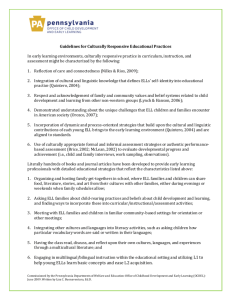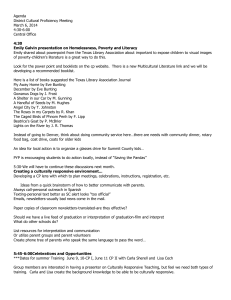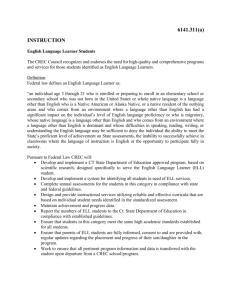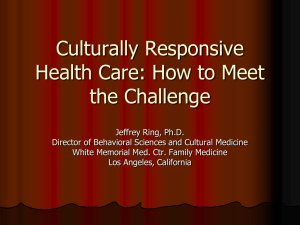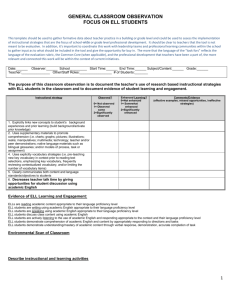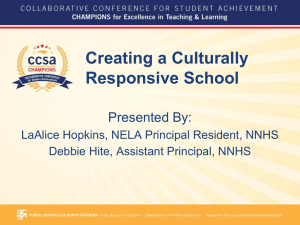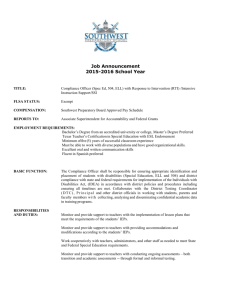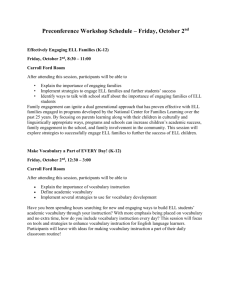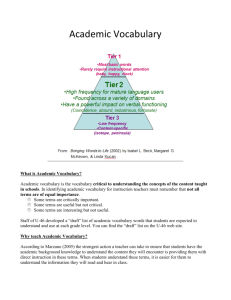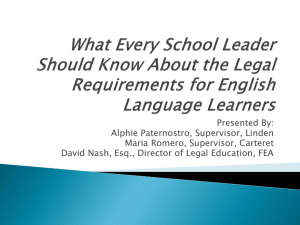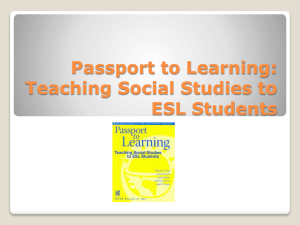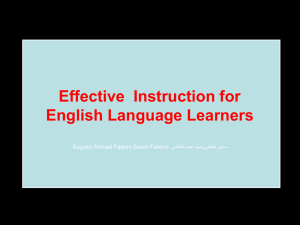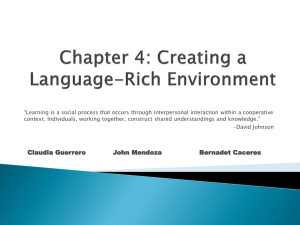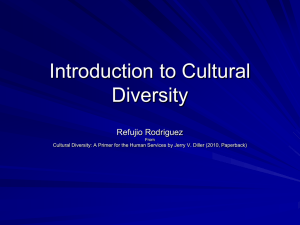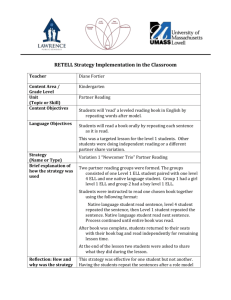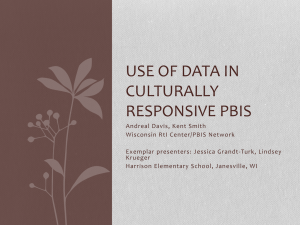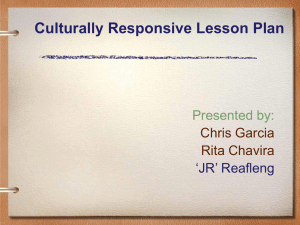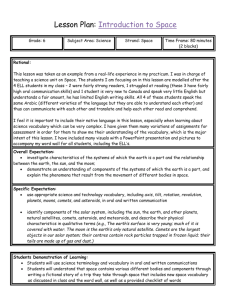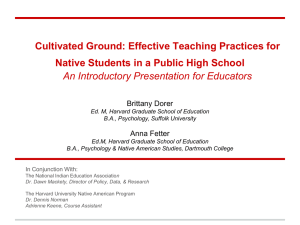Culturally Responsive Teaching in Diverse Classrooms
advertisement
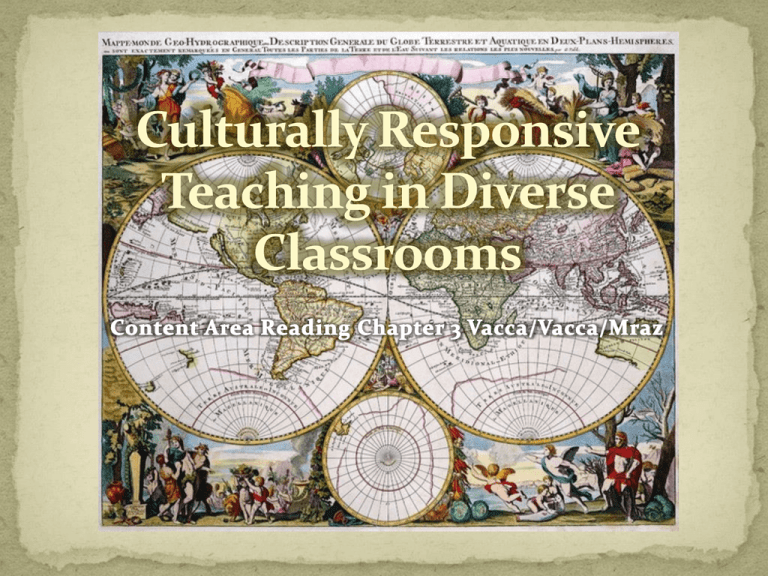
Objectives •To understand how it feels to be different in a tradition classroom setting •To develop strategies to teach a diverse student population •To look on student differences as a resource and learn how individuals in a diverse classroom can benefit the instruction of all students Essential Question How can understanding students from different backgrounds help us to grow as educators? Contributions Approach Reflects the surface level of culture—such as celebrating holidays—but does not provide an indepth student of more profound cultural elements. Decision-making/Social Action Approach Additive Approach Incorporates multiple perspectives when investigating a topic—like looking at a historical event from a different cultural viewpoint—but the addition is incidental to instruction and the curriculum remains largely unchanged. Transformative Approach Transformative Approach In this approach examining cultural and ethic differences drives instruction—understanding the concepts, events , issues and perspectives is key to learning the content being presented. Additive Approach Decision-making/Social Action Approach Is designed to engage students in a project or activity that encourages students to learn about multicultural issues, evaluate it from various cultural points of views and take action on those conclusions in the interest of social justice. Contributions Approach Set Appropriately High Expectations For All Students Revolve Instruction Around Students Working In Groups and Pairs Turn Over Control of Portions of The Lessons To The Students Create Positive Relationships with Families and the Community Culturally Responsive Instruction Transition From Teacher to Facilitator of Learning Employ Active Teaching Methods Capable of Involving All Students Promote The Creation of A Culturally Sensitive Environment You are talking but are your students listening? Can they even understand what you are saying? The world is changing, Are you ready? The English Language Learner (ELL) student population continues to grow more rapidly than the student population as a whole. According to the National Center for Educational Statistics the general population has grown 9% from 1993 to 2003, while the ELL population has grown 65% in that same time. The ELL student population now comprises 10% of all students. By 2030, projections estimate that ELL students will make up 40% of all students in elementary and secondary schools. That means in a class of 30 students 12 students may have no idea what you are saying. Set Appropriately High Expectations For All Students Revolve Instruction Around Students Working In Groups and Pairs Turn Over Control of Portions of The Lessons To The Students Create Positive Relationships with Family and Community Culturally Responsive Instruction Transition From Teacher to Facilitator of Learning Employ Active Teaching Methods Capable of Involving All Students Promote The Creation of A Culturally Sensitive Environment •Multiple Modes of Instruction •Have Students Working in Groups •Allow Students to Teach Each Other •Let the Students See What the Final Product Should Look Like The New Plan: 1.) Watch the Video and Fold Along 2.) Have Instructions with Diagrams in Front of You 3.) Have an Example of the Finished Product 4.) Work in Groups of Four and Help Each Other Provide Comprehensible Input Use Strategies for Vocabulary Development Differentiate Between Intensive and Extensive Reading Teach students the Repeated Reading Strategy Use Learning Strategies for Active Engagement Use Writing Strategies Make a memory! Your independent practice this week is to plan your own cultural adventure. In a half page paper, write a detailed plan of how you would participate in an activity that would help you to learn more about a new culture. Look at some examples: • Attend a cooking class to learn about another culture’s cuisine • Learn to play a game from another country • Go to a dance class and learn about the dance traditions and music of the country that dance originated from • Attend a service at a place of worship of a religion you are unfamiliar with and learn about their traditions • Plan an outing to a foreign food restaurant, look up a menu and learn about the foods and plan what you will order in advance Extra credit will be given for students who choose to carry out their plan and share their experiences with the rest of the class. Check Your Email To Find Some Websites That Will Help Get You Started!
